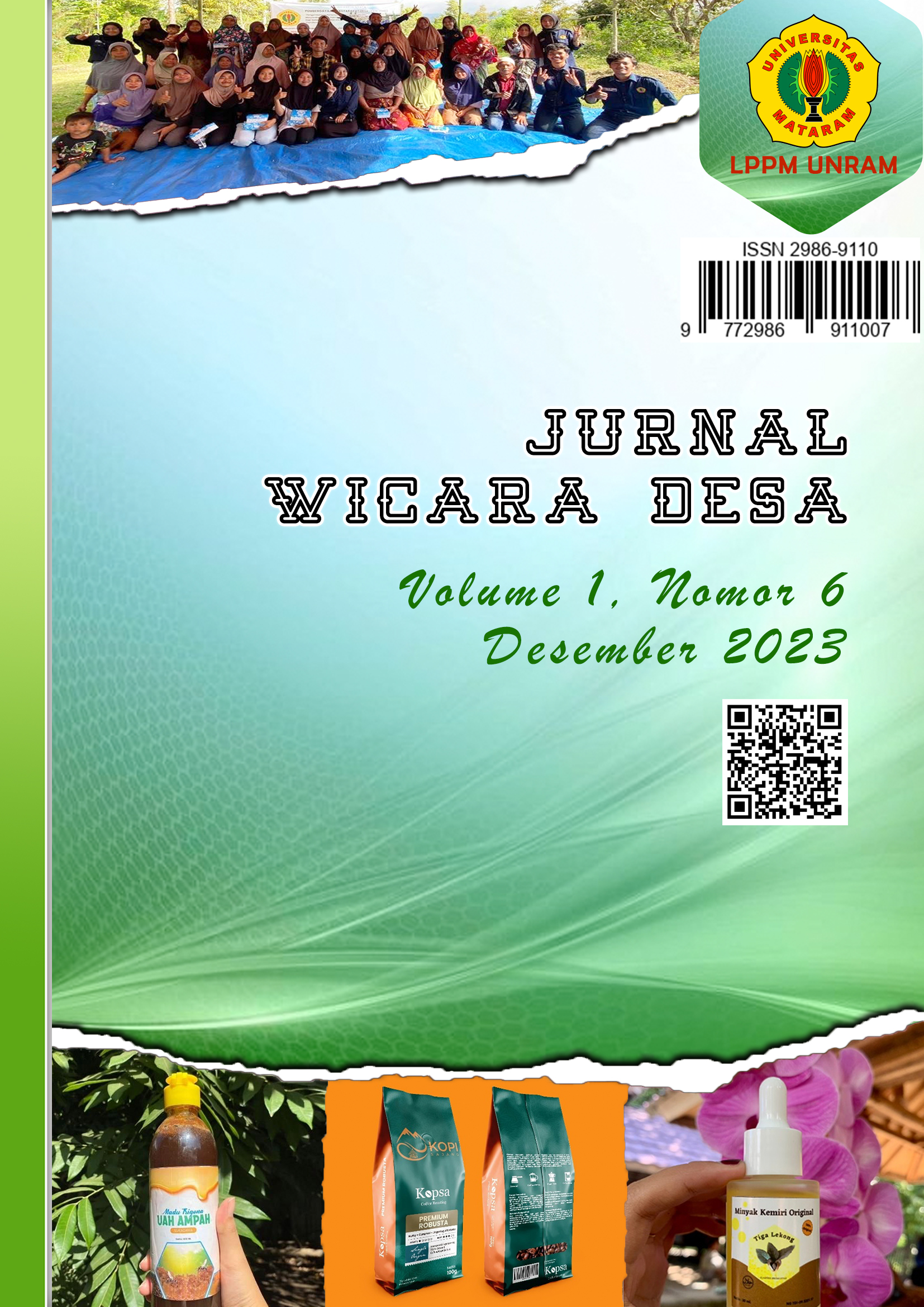PENDAMPINGAN PEMBERIAN MADU TRIGONA SEBAGAI NUTRISI TAMBAHAN MELALUI POSYANDU UNTUK PERCEPATAN PENURUNAN ANGKA STUNTING DI DESA SESAIT, KECAMATAN KAYANGAN, KABUPATEN LOMBOK UTARA
DOI:
https://doi.org/10.29303/wicara.v1i6.3470Keywords:
Sesait Village, Stunting, Trigona HoneyAbstract
Sesait Village is a village with abundant agricultural producers located in Kayangan sub-district, North Lombok district. This village is a village that has a lot of potential to be developed, especially in agriculture and animal husbandry. The livelihood of the majority of the population is farming, gardening and animal husbandry. Honey bee farming is an alternative choice for the people of Sesait village, namely the Trigona honey bee. The purpose of this study is to provide information about the role of the government and the community in dealing with the stunting problem that occurs in Sesait Village. This research partnered with the Sesait village government, Sesait village PKK women, the Dasa Wisma group, and the Santong health center. Data collection techniques were carried out by means of requests for stunting data, interviews with related parties and surveys. Stunting which began to occur in 2021 until now has been able to be overcome by the Sesait village government with an initial number of 165 children affected by stunting until the latest data in 2023 totaling 101 children still suffering from stunting. This drastic development from 2022 to mid-2023 from 134 to 101 children affected by stunting occurred due to the additional nutritional intake of Trigona honey bees for children affected by stunting. In general, giving trigona honey is a solution in dealing with stunting prevention because the content contained in the honey is useful as additional nutrition for toddlers who are stunted.






